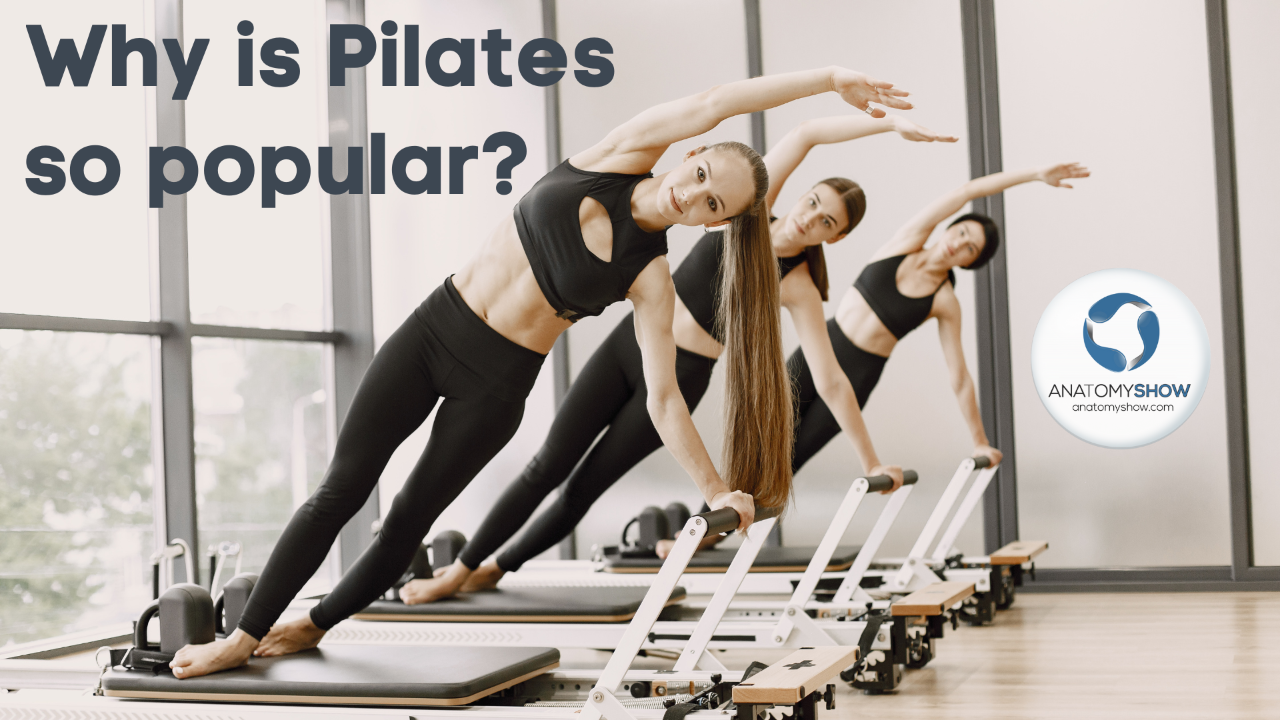
Why is Pilates so Popular?
Sep 22, 2023Yesterday I was sitting together with another senior yoga teacher to catch up after some time of not seeing each other.
Invariably at some point the conversation spiralled back to yoga practice and teaching.
What we had noticed was a continued rise of the popularity of Pilates training, studios and enthusiasm for it. This is of course a good development. The more people take an active role in continuing to move or redeveloping movement abilities, the better.
What we reflected on was the change in belief, or maybe trust, that yoga practice alone would be sufficient. The notion of yoga as a ‘sport’ or ‘exercise’ of course is quite new and debatable in its own right.
Generally, the vast majority of yoga practitioners in western countries practices yoga by doing some physical movements. This places physical effects of yoga into the most obvious position.
What has changed in the last ten to fifteen years to shuttle so many yoga practitioners to also take up Pilates or even switch to Pilates altogether?
Have we overlooked something in yoga, made mistakes in developing teaching curricula, or is Pilates simply better (at least in some regards)?
As our conversation went on, I recalled a discussion with a orthopaedic doctor a few weeks ago. Her observation was, that despite being a yoga practitioner herself, some currently practiced positions, didn’t look right, or could result in long-term problematic outcomes. At the time our conversation was about shoulder stabilization in postures where the arms are overhead. Indeed, rotator cuff injuries, bursitis and muscle tension are quite common complaints.
How common are yoga injuries really? Studies from the US and Australia show increasing percentages of emergency room visits at hospitals due to yoga injuries. Injuries are increasing at much higher rates than increases in numbers of yoga practitioners. [1] [2]
We might perhaps think from these figures that physical yoga practices are actually harmful and Pilates might be the saviour.
When doing Pilates exercises we follow cues that methodically and specifically activate muscle groups in the body against some form of resistance, while being in specific positions.
That sounds kind-of like yoga posture practice, right?
Now, where does the injury risk arise in yoga practices?
On closer examination of how yoga is instructed, the focus is on achieving certain shapes rather than activating muscle groups.
Giving shapes precedence over process (including stabilizing and protective muscle activation), exposes a body to angles and forces that might not be risk free.
Rather than directing postures from the internal cohesiveness and structure, shape based practice can compromise individual joint integrity.
Take for example this movement of a sun salute. From the downward dog position one leg steps forward to then raise the torso and arms into warrior 2 position.
Downward dog is a forward bend (flexion) at the hip that for most people remains passive on the front of the body.
Stepping one foot and leg forward requires either momentum or strong hip flexor shortening.
Raising up to warrior 1 brings the spine (and sometimes hip) into extension with muscles actions on the back of the body.
The side of the back leg remains mostly without muscular support at the front of the hip, the sacrum iliac joint and the lower back.
Doing this repeatedly leads to wear and discomfort in the lower back and around the hip joint.
The alarming rise in hip joint labral tears in recent years underlines this common support failure. [3]
How can we prevent this from happening?
The answer is: By engaging the extended core area of the body.
Voila! This is what Pilates offers. When practicing Pilates well, practitioners learn to use and develop good core muscle skills and tone.
It appears from this perspective that yoga posture instructions are insufficiently addressing core engagement and use. Core by definition means centre, referring to the inside. An increased focus in yoga postures on the outer shape, the appearance, might be detracting from core engagement and support.
When looking at the body more peripherally from the hips and lower back, joints like knees, shoulders, wrist and neck might benefit from muscle activation skills and tone.
One of my yoga teachers emphasizes that ‘Yoga is a Work-In’ not a ‘Work-Out’. When we can bring our attention to the activations and tone on the inside of the body again, we might find an improved connection to our body and practice with greater stability and safety.
One way we can become aware of our ‘inner abilities’ is by discovering the muscles an functions possible within us through learning yoga anatomy. Sometimes this is referred to as movement anatomy or functional anatomy. It’s about the same body, the wording referring mostly to varying angles of interest.
You can find suitable movement anatomy courses here.
Is it time to let go of our Pilates classes then? My experience and recommendation is not to do so in the short term. Rather pay attention and observe how you move and activate your body in Pilates classes and try to integrate this into your yoga practice.
As the talk with my friend drew to a close we reflected on the importance of movement to remain healthy. We both are interested in practicing yoga for long-term health and injury prevention. Should this direction be your interest too, then keep reminding yourself that “Healthy movement begins on the inside. Work from there”.
[1] https://www.ncbi.nlm.nih.gov/pmc/articles/PMC5117171/
[2] https://www.tandfonline.com/doi/abs/10.1080/00913847.2020.1717395
[3] https://www.ncbi.nlm.nih.gov/pmc/articles/PMC2697339/
Don't miss what's happening!
New posts, education, and movement ideas delivered to your inbox.
We hate SPAM. We will never sell your information, for any reason.

